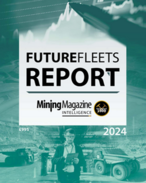The rating for BHP has been lowered to A from A+, and the rating for the company’s subordinated notes to BBB+ from A-.
BHP has been placed on CreditWatch with negative implications.
“The CreditWatch placement reflects the possibility that we might lower the ratings by a further one notch after the group’s earnings release in late February, largely depending on the announced dividend policy and capital expenditure guidance,” S&P said.
S&P singled out BHP’s commitment to its progressive dividend as a factor in any future ratings changes.
The downgrade reflects S&P’s lower price assumptions for iron ore, oil and copper due to “very challenging market conditions and increased demand uncertainty over the coming years”
S&P now expects iron ore to average $US40 a tonne, and copper $2.10-2.20 per pound this year and next.
“Metal prices have come under pressure because of fears of lower demand from China, and excess supply remains an issue,” S&P said.
“Moreover, particularly relevant for BHP Billiton, the oversupply of crude oil in the market results in very weak oil and Henry Hub gas prices, which we now believe will last over the foreseeable future, putting further pressure on its balance sheet.”
S&P warned that BHP could see its ratio of funds from operations to debt fall by 30-40% over this year and next, well below its threshold for the coveted A+ rating.
The ratings agency said at this stage, there was no certainty on BHP’s response to current market conditions, but things should become clearer on February 23 with the half-year results.
The company will likely post a loss after announcing expected write-downs last month of more than $7.5 billion, mainly attributed to its oil and gas assets.
At $40 a barrel of oil, S&P says BHP will be break-even after capital expenditure.
S&P is also monitoring the impact of the Samarco dam disaster in Brazil.
BHP noted S&P’s announcement by saying: “BHP Billiton has the strongest credit rating in the sector and remains committed to maintaining its strong balance sheet.”
Morgans analyst Adrian Prendergast is expecting BHP to halve its dividend and drop its progressive dividend policy.
"To further support cashflow and its credit metrics in the low commodity price environment we also anticipate BHP will announce further lowering of its capex plans (with some flex still in its budget)," he said.
Meanwhile, Rio’s A-/A-2 ratings have been placed on CreditWatch with negative implications, also pending the company’s full-year earnings, due next week.
S&P is concerned that Rio’s funds from operations to debt ratio could fall to 30-35% this year and next.
“The CreditWatch placement reflects the possibility that we could lower the rating by one notch over the coming weeks if the company does not take supportive measures amid the currently weak commodity prices pressuring its cashflows,” S&P said.























